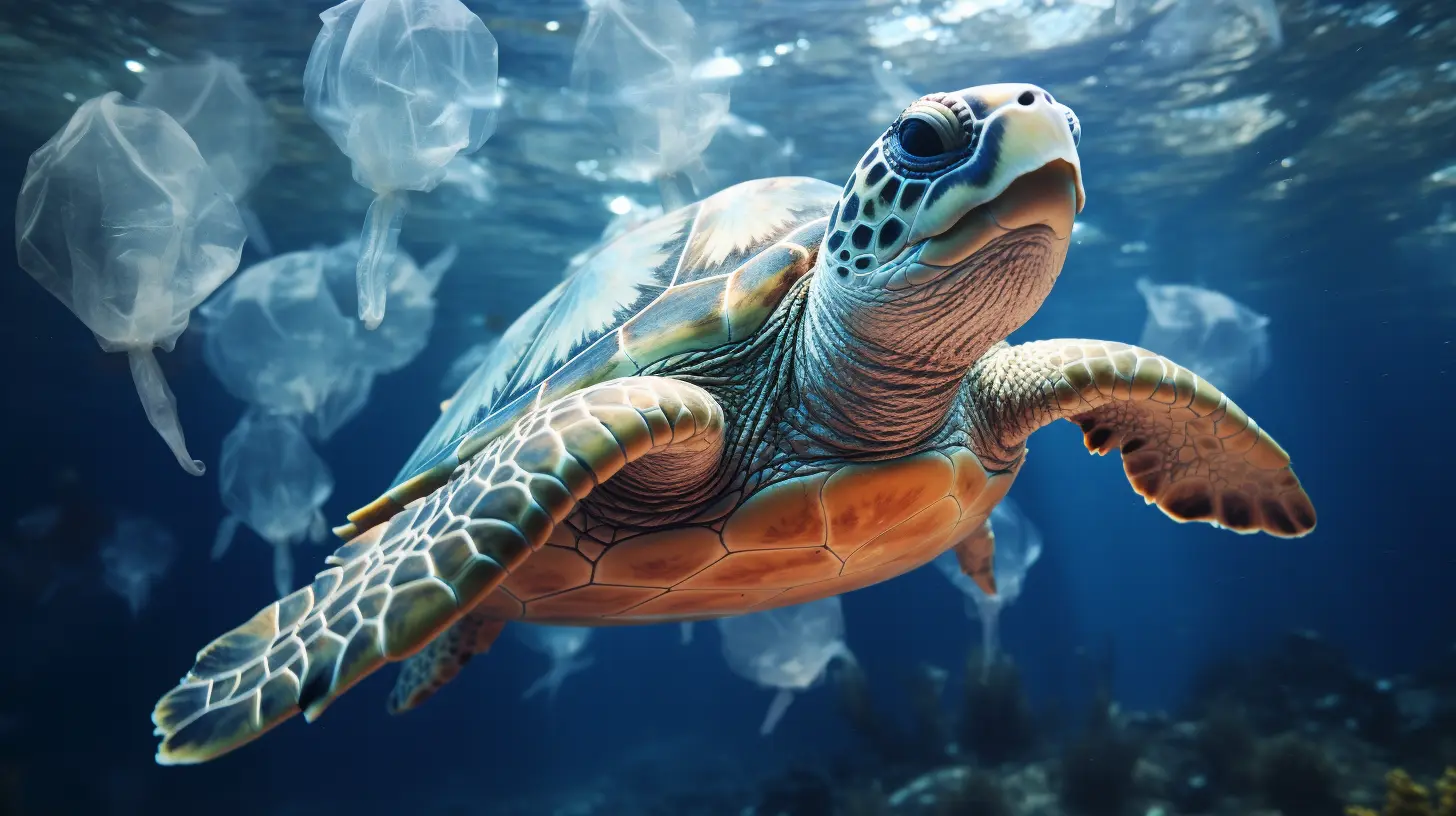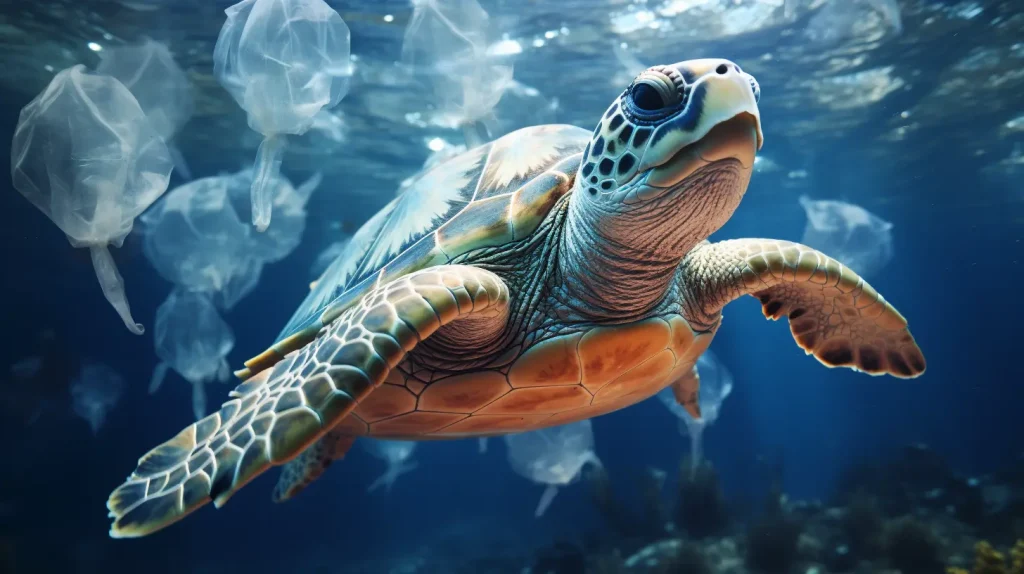
Over the past two decades, the tranquil expanse of our oceans has been disrupted by an unexpected force: jellyfish. Once considered gentle drifters of the sea, jellyfish have become a formidable threat, overwhelming marine ecosystems and wreaking havoc on aquatic life.
From the shores of New Zealand to the Sea of Japan, reports of jellyfish infestations are rising. These gelatinous creatures, often no larger than a grain of pepper, clog essential pipes, sabotage nuclear reactors, and crippling fishing industries. With their insatiable appetites, they jeopardize the delicate balance of marine ecosystems.
In the face of this crisis, a surprising hero emerges: the humble sea turtle.
Table of Contents
The Rise of the Jellyfish Onslaught
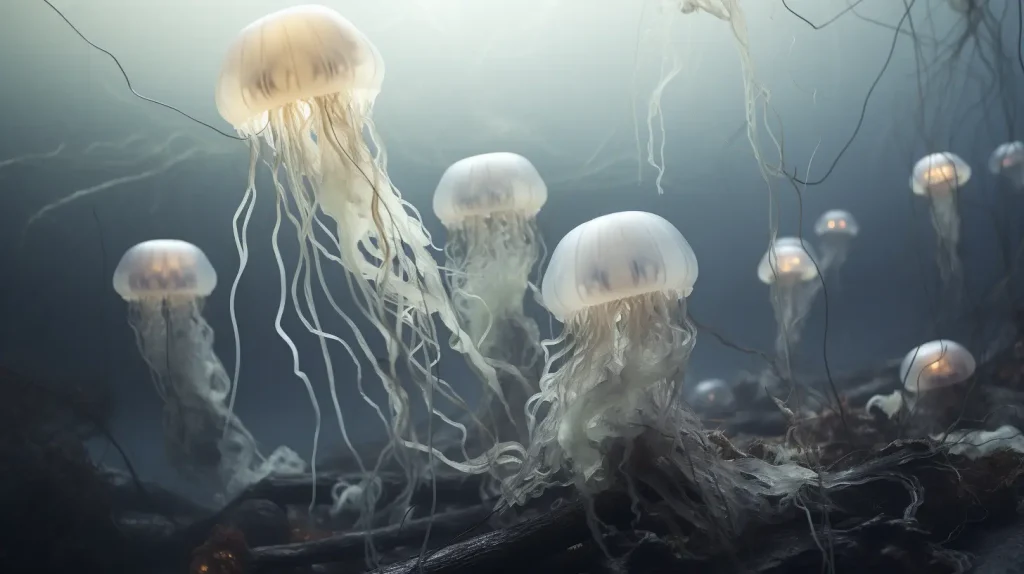
Divers Swatting Jellyfish in New Zealand
In the crystal-clear waters of New Zealand, divers find themselves battling swarms of stinging jellyfish, each tiny creature packing a potent punch. With millions of these minuscule jellyfish congregating, they pose a significant threat to divers and the marine ecosystem.
The minuscule size of these jellyfish belies their potential for disruption, highlighting the urgency of addressing the growing jellyfish crisis.
Nuclear Reactor Shutdown in Sweden
An unexpected victim of the jellyfish surge emerges thousands of kilometers away in Sweden: a massive cluster of moon jellyfish. These seemingly innocuous creatures brought one of the world’s largest nuclear reactors to a grinding halt by clogging its crucial pipes.
The event shed light on the alarming capacity of jellyfish to disrupt even the most sophisticated human infrastructure, revealing the extent of their newfound dominance in the oceans.
Nomura’s Jellyfish Menace in the Sea of Japan
A more ominous spectacle unfolds in the vast expanse of the Sea of Japan: swarms of colossal Nomura’s jellyfish. With bells two meters in diameter and weighing up to 200 kilograms, these giants of the sea present a menacing force. Their voracious appetite distresses local fishermen as they snap nets and devastate local fish populations.
The swift proliferation of these mammoth jellyfish showcases the dangerous potential of unchecked jellyfish populations.
The Jellyfish Threat Unveiled

Devourers of Marine Life
Jellyfish once considered benign drifters, have evolved into voracious predators that substantially threaten marine ecosystems. These gelatinous creatures have developed a taste for fish eggs and larvae, destabilizing fish populations and undermining marine farming efforts.
Their rapid reproduction and resource consumption outcompete adult fish, jeopardizing their survival and the balance of the ecosystem they inhabit.
The Potential for an Ominous Future
If current trends persist, the world’s oceans could be on a trajectory toward a startling future: a realm where jellyfish reign supreme, turning the once-thriving marine ecosystems into barren expanses of gelatinous masses. The proliferation of jellyfish poses a multifaceted challenge, demanding innovative solutions to restore equilibrium to our oceans.
The Sea Turtle: Guardian of Balance
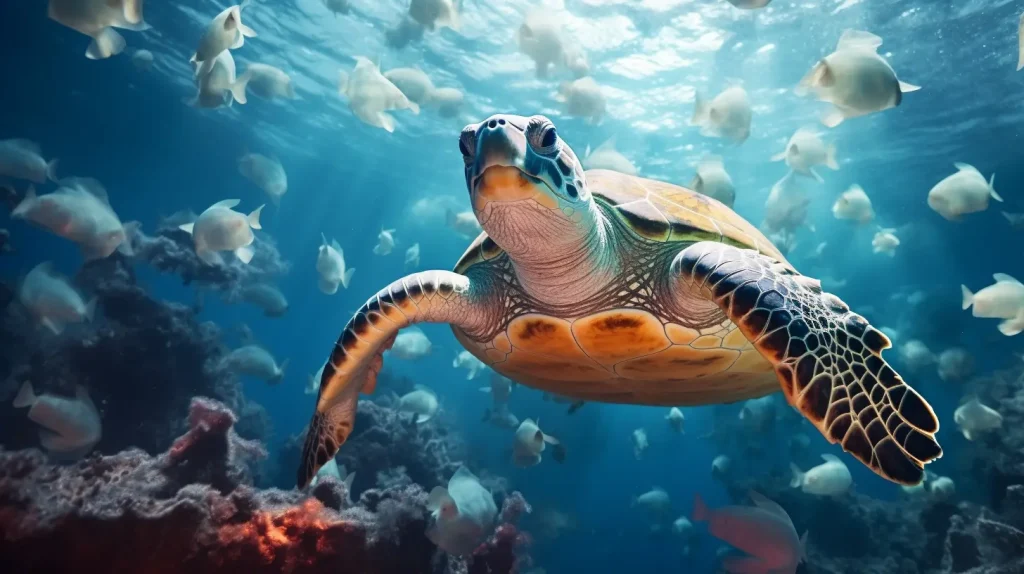
Ancient Predators of the Sea
While many marine creatures feed on jellyfish, sea turtles stand out as some of the most ancient and effective predators. Sea turtles, encompassing various species, share a common trait: the predation of jellyfish at different stages of their lives.
Among them, the leatherback sea turtle emerges as a pivotal figure, consuming vast quantities of jellyfish throughout its long lifespan.
The Leatherback’s Remarkable Feeding Habits
Leatherback sea turtles, the largest of their kind, astound with their insatiable appetite for jellyfish. Consuming over 1,000 metric tons of jellyfish in their roughly five-decade-long lives, leatherbacks exhibit a fascinating adaptation to their peculiar diet.
Despite the minimal nutritional value of jellyfish, leatherbacks thrive by ingesting colossal amounts daily, maintaining a delicate balance to sustain their massive size.
Jellyfish vs. Sea Turtle: An Unconventional Battle
The sea turtle’s thick scales, composed of keratin similar to nails and claws, grant them invulnerability to the venomous stings of jellyfish. This unique adaptation enables sea turtles to hunt jellyfish with impunity, utilizing their leathery armor to capture and consume these gelatinous prey.
The battle between jellyfish and sea turtles highlights the intricacies of predator-prey dynamics in the marine ecosystem.
The Jellyfish Defense Mechanism and Human Impact
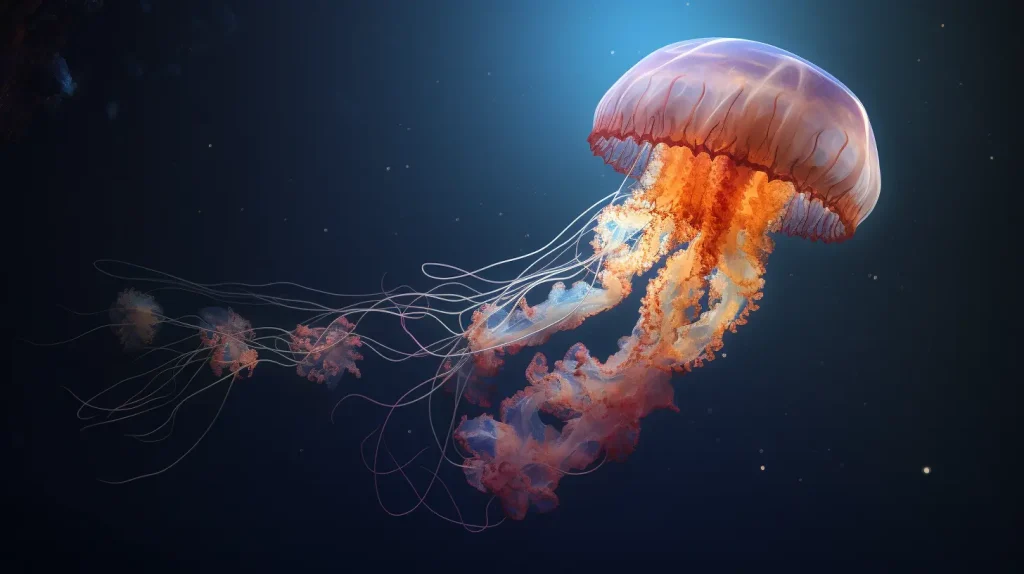
Jellyfish Reproductive Prowess
Jellyfish possess a potent defense mechanism rooted in their prolific reproductive capabilities. Most jellyfish species have evolved to reproduce sexually and asexually, allowing them to rapidly multiply and colonize various marine environments.
In temperate climates, these creatures often engage in mass reproductive events, resulting in alarming blooms that disrupt ecosystems and outcompete other species.
Human-Induced Blooms
Human activities significantly contribute to the frequency and intensity of jellyfish blooms. Fertilizer runoff from agriculture introduces chemicals that trigger these blooms while harming other aquatic life. Climate change-driven high water temperatures extend jellyfish reproductive seasons, exacerbating their population growth.
Marine construction and pollution provide ample surfaces for jellyfish polyps to attach and mature, further exacerbating their expansion.
Preserving the Balance: Protecting Natural Predators

The Threat to Natural Predators
Protecting their natural predators is a critical strategy to mitigate jellyfish overpopulation. Small-scale fisheries, vital to communities in Mexico and Peru, employ gillnets that injure and kill hundreds of sea turtles annually. The survival of these magnificent creatures is imperiled, and urgent action is needed to prevent their extinction.
Innovative Solutions for Coexistence
Researchers have pioneered innovative, cost-effective methods to mitigate risks to sea turtles posed by fishing practices. Attaching green LED lights to gillnets offers a practical solution that enables sea turtles, dolphins, and seabirds to avoid fishing gear.
This approach balances sustaining fishing communities and safeguarding sea turtle populations, illustrating the potential for harmonious coexistence.
Conclusion
The rise of jellyfish as dominant forces in marine ecosystems paints a dire picture for the future of our oceans. Their capacity to disrupt human infrastructure, devastate fishing industries, and undermine marine life necessitates immediate and innovative action.
In the complex battle to restore balance, sea turtles emerge as unlikely heroes, utilizing their unique adaptations to curb jellyfish populations. By protecting sea turtles and implementing thoughtful solutions, humanity can forge a path toward preserving our oceans’ delicate equilibrium and ensuring diverse marine life’s survival.

